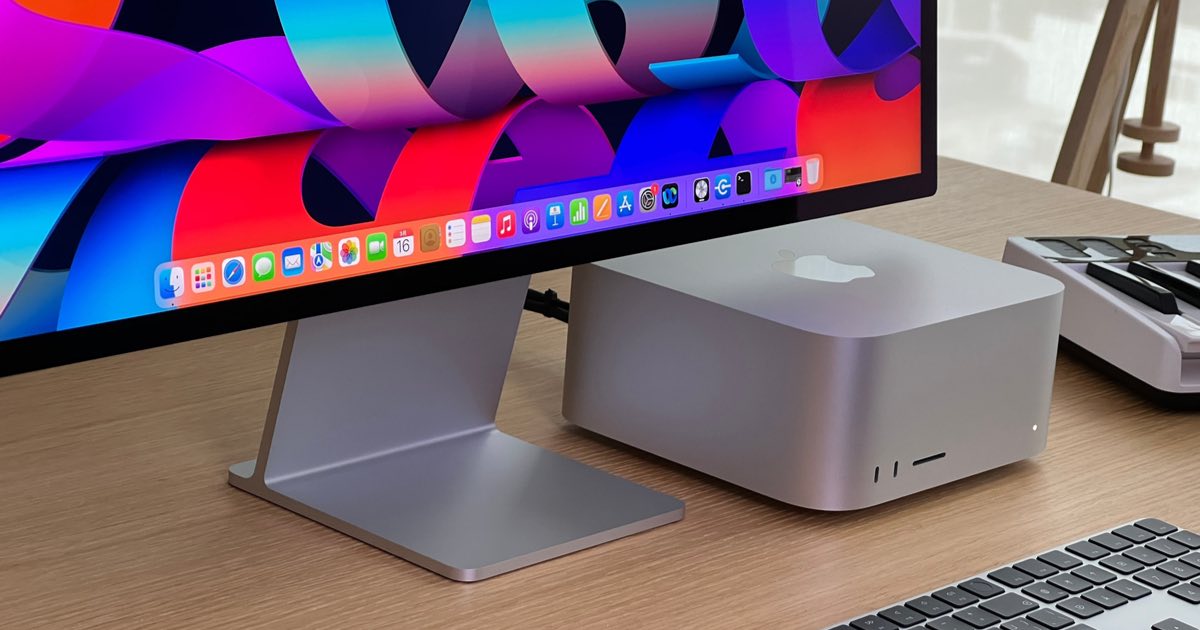The new Mac Studio with the M1 Ultra chip is powerful. Incredibly powerful. But is there a major advantage to spending the money versus simply getting a Mac Studio with the M1 Max? PCMag hardware analyst Brian Westover performed a series of benchmarks tests to compare the Apple M1 Max and the M1 Ultra. Though the M1 Max Mac Studio remains fairly close to an M1 Max MacBook Pro in terms of performance, the Mac Studio’s performance truly crystalizes when given the M1 Ultra.
The M1 Max VS The M1 Ultra: Testing Performance
The M1 Max boasts 10 CPU cores and up to 32 GPU cores. The chip can have as much as 64GB of unified memory, as well as external-device support for a Thunderbolt 4 controller as well up to four external displays.
Of course, the new M1 Ultra far outdoes these numbers, as it is two M1 Max chips fused together. Connected by a special interconnect known as UltraFusion, the M1 Ultra is two M1 Max combined onto a single silicon die. With 2.5 terabytes of bandwidth, the M1 Ultra is four times larger than competing interconnectors.
With the M1 Ultra literally having double the capacity of the M1 Max, PC Mag decided to put the chips to the test. Using two systems, one with the M1 Ultra and one with the M1 Max, PCMag ran a series of tests with fascinating results.
It is worth noting that the two machines tested were both Mac Studios. One had the M1 Ultra (3.2 GHz) featuring the 64-Core GPU. This configuration had 128GB of RAM and 2TB SSD storage. The second Mac Studio featured an M1 Max (3.2GHz) with 32-Core GPU. This model featured 64BG of RAM, but the same 2TB SSD storage.
Round One: Processing Power
To test the speed of the M1 Max and the M1 Ultra processors, Westover utilized a series of different benchmarks tests to achieve his results. Maxon’s Cinebench R23 as well as Geekbench Pro showed the M1 Ultra gaining the advantage, with the chip nearly doubling the scores of the M1 Max across each test. Westover also performed more practical tests, such as transcoding 4K video to 1080p and running Photoshop for extended periods of time. Even in a more practical setting, the M1 Ultra outperformed the M1 Max.
Notably, the M1 Ultra gave the fastest video rendering time the magazine has ever seen. Overall, the M1 Ultra produced significantly faster rendering times than the M1 Max.
Round Two: Browser Based Benchmarks
Westover also performed several browser based benchmark tests. For these tests, he utilized the benchmarks JetStream 2 and Principled Technologies’ CrXPRT. WebXPRT 3 is also used to browser test HTML and Javascript throughput.
Interestingly, these tests concluded with far less variation between the M1 Max and M1 Ultra versions of the Mac Studio. In some instances, the M1 Ultra was a half step behind its single-CPU brother. Westover states that this is because the incredibly high horsepower of the M1 Ultra does not translate into improved browser performance. The M1 Ultra did outperform in a series of tests involving Basemark Web 3.0.
Round Three: Graphics
With the biggest difference between the M1 Ultra and the M1 Max being the jump from 32 GPU to 64 GPU, the Mac Studio with the M1 Ultra absolutely dominated every graphics test. In a test involving 3DMark Wildlife Extreme running in unlimited mode, the Mac Studio M1 Ultra produced an outrageous score of 35,019. The M1 Max received a score of 20,348.
Tests in GFXBench, a cross-platform GPU performance benchmarking tool, show the Mac Studio with the M1 Ultra continuing to outperform. Westover argues that any system capable of delivering over 300fps can claim to offer solid graphic performance. The M1 Ultra delivers 484fps. While Westover stresses this by no mean fixes Apple’s “spotty” gaming support, both computers had zero problems playing Rise of the Tomb Raider.
In the End
Ultimately, Westover states that the Mac Studio M1 Ultra is the most powerful Mac to ever be sold for less than $10,000. However, the best hardware does not always mean the best option for consumers. The M1 Ultra is specifically for those that need maximum power, such as those performing professional-grade video editing or sound engineering.
Those who may want the Mac Studio with the M1 Max might consider what they will use the computer for. Ultimately, the powerful desktop is not that much more advanced than an M1 Max-equipped MacBook Pro. If you do not mind that your device may not be all that portable, perhaps the Mac Studio with the M1 Max is for you.
However, there is one thing Westover makes perfectly clear: the Mac Studio with the M1 Ultra is an absolute beast. It will be exciting to see this chip possibly enter more devices.
